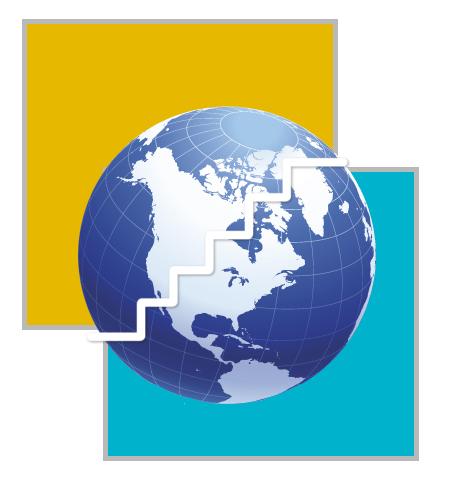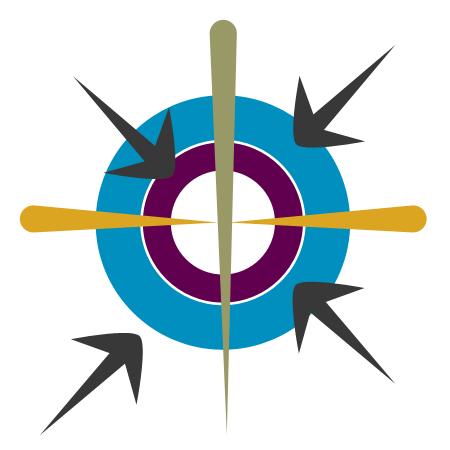MEDIA
The author is historian of linguistic policy in South Asia
I have two books on my table. One is Harsh Mander's Cry, My beloved Country: Reflections on the Gujarat Carnage (2004) and the other is Cost of Conflict between India and Pakistan (2004) by Ilmas Fatehally and Semu Bhatt of the Mambai-based Strategic Foresight Group. Both reports expose the wounds left by the conflict within South Asian societies and between the two major South Asian countries--India and Pakistan.
Harsh Mender's book reminds me of Alan Paton's famous novel Cry, the beloved Country. The novel was about the wounds left in the South African society created by apartheid. The report is about the wounds in India and Pakistan by the Hindu-Muslim conflict. In the early 2002 Muslims burnt down a train carrying Hindus. In the spring of that year the state of Gujarat became a slaying field. So many Muslims were killed, maimed, raped and traumatised that it is difficult to count them all. The sheer horror of this genocides communal riot boggles the imagination. But, while Hindu mobs went on a rampage and the police stood watching, hundreds of humanitarian activists, people from the press, photographers, humane people flocked to Gujarat and sometimes risked their lives and livelihood to help the victims. Harsh Mander is one of them. This book of 139 pages eloquently expresses the anguish he felt as he interviewed people who had passed through deep trauma so as to tell the world what really happened.
Harsh Mender wrote most of these articles for the press immediately after the bloody spring of 2002. He wrote in the Times of India, The Hindustan Times and the Frontline. The articles, especially the first one entitled 'Cry, the Beloved Country', shook India from its slumber; forced the educated class to admit that all was not well with India and gave courage to others to stand for the truth. The articles were translated in many languages but they became known, and that too to a very small elite, in Pakistan when the author visited this country in February 2004.
In my opinion the most important part of the book is on the role of the state authorities in Gujarat. Hindu extremists in authority actually subverted the process of justice. Among other things the author points out that 4, 252 cases were registered in connection with man violence but 2,107 were closed down without issuing a charge sheet to the courts. Cases were assigned to police officers accused of abetting or even participating in the massacre. These and several other such cases suggest that the state had planned and executed the anti-Muslim campaign in Gujarat much alike a Nazi pogrom of the German Jews.
How does this affect India? And, further, Indo-Pakistan relations? For one thing, as Harsh Mander points out, this will jeopardize the ideal of an India that is at peace both within and without. The Indian liberals genuinely desire peace and harmony between Hindus, Muslims and Sikhs otherwise India would break up or become a society perpetually experiencing civil war. As the other book, Cost of Conflict, emphasises, this is not what the liberals or the congress desires. The danger of this has increased since the Hindus extremists (the RSS types) have become powerful. They form the nucleus group of the BJP but leaders like Vajpayee, acutely aware of the dangers such people create, are trying to contain them and keep them in check. Will they succeed in doing so?
This brings me to the second report I mentioned earlier. This report has much factual information but some of it is incorrect at places. Some of it may be correct but no reliable source has been quoted. The report asserts that the ISI maintains some centers in India but how this information has been gathered is not given. Moreover, the role of the Indian RAW has not been described at all. Thus, on the whole, there is some anti-Pakistan bias at places in the report. However, the report correctly points out that the cost of conflict between India and Pakistan is unsustainable.
For instance, the war casualties of the conflict in 1947-48; 1965; 1971 and 1999 (Kargil) have been 8,733 for India and 13,896 for Pakistan. In Siachen, where not even a blade of grass can grow, India has lost 913 soldiers and Pakistan 456 in the same period of time. Moreover, look at the appalling economic cost of Siachen alone: Rs. 40 million a day for India and Rs. 10 million a day for Pakistan. If this is not insanity one does not know what is! And the Pakistani argument that this is more harmful for India than it is for Pakistan is morally flawed because people on both sides do suffer and no norm of justice can justify the suffering of ordinary people anywhere in the world. Thus there is no way this can be called justified.
The report mentions an intriguing new concept: Gross Terror-Economy Product (GTP). For Pakistan there is a visible GTP of 164 billion and an invisible one of 100 billion both coming up to 264 billion or 6.6 per cent of the GDP. The invisible one is estimated from calculations of income from smuggling, illegal arms trade and such other activities. The report gives hypothetical figures for fighters operating in Kashmir but these might have changed because of recent policy shifts in the direction of peace. The must be this kind of index for India, including the cost for the operations of RAW, but this has not been given in the report-- something which must be considered as a flaw in it.
The report links Islamic parties, militant groups and seminaries for making Jihad (with reference to Afghanistan and Kashmir) an operational component of Pakistani society. The point is that if there had been no Kashmir conflict this Jihadisation of Pakistani society may not have taken place. While this may by true it is necessary to point out that this process started because of America's proxy war against the Soviet Union in Afghanistan. It was then that, with American money, Jihadi forces were first created. As for the Pakistani military's role, this has been given in this report as well as in many other sources. The problem, again, is that the report gives assertions without quoting sources of information.
The report then goes on to argue that the fallout of the conflict is the rise of crime in both countries; the insecurity which prevails in both (because of blasts and acts of violence); and the increased presence and influence of the military in Pakistan. It also points out that the curb on civil liberties in India, the loss to tourism and loss of trade as especially detrimental to India. In the end the report tells us how devastating it would be if Karachi and Bombay were attacked by nuclear weapons. And here the report enters the domain of what Hermann Kahn, the famous American strategist, used to call 'the unthinkable'. Someone has to 'think of the unthinkable' and the report forces us to do so.
What the two reports have in common is that they point out how the religious extremists from both countries have become the guardians of violence. How the state's domain of projection of power over land and people has been appropriated by components of Hindu and Muslim militant groups in India and Pakistan. This is not necessary. After all, in 1948 Maulana Maudoodi condemned the Kashmir War as a war of nationalism not jihad. The state machinery, in its own interest, disseminated nationalism by linking it with borders, with religion and with military power. Now both the states find it difficult to be flexible because there are people invoking the name of the sacred who equate all flexibility on military matters with treason as well as heresy. This, in my view, is the greatest cost of violence in South Asia. And to understand this cost, this bleeding wound, the two reports must be read together.





